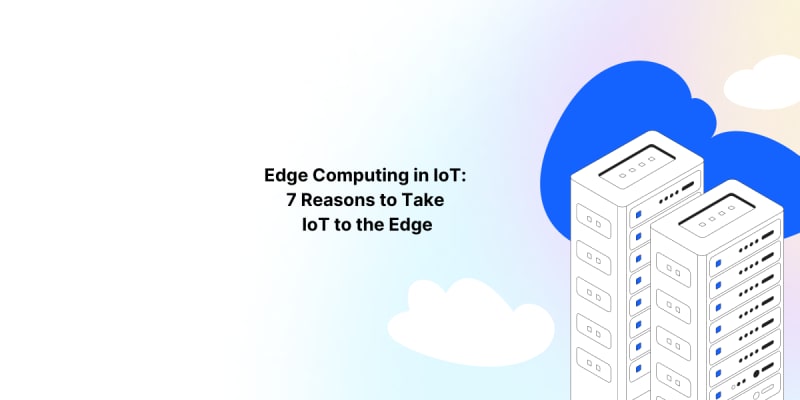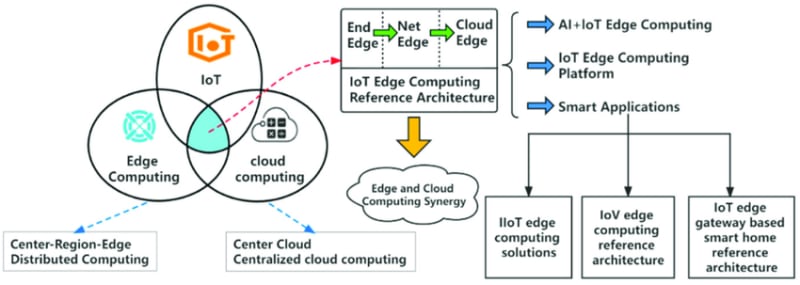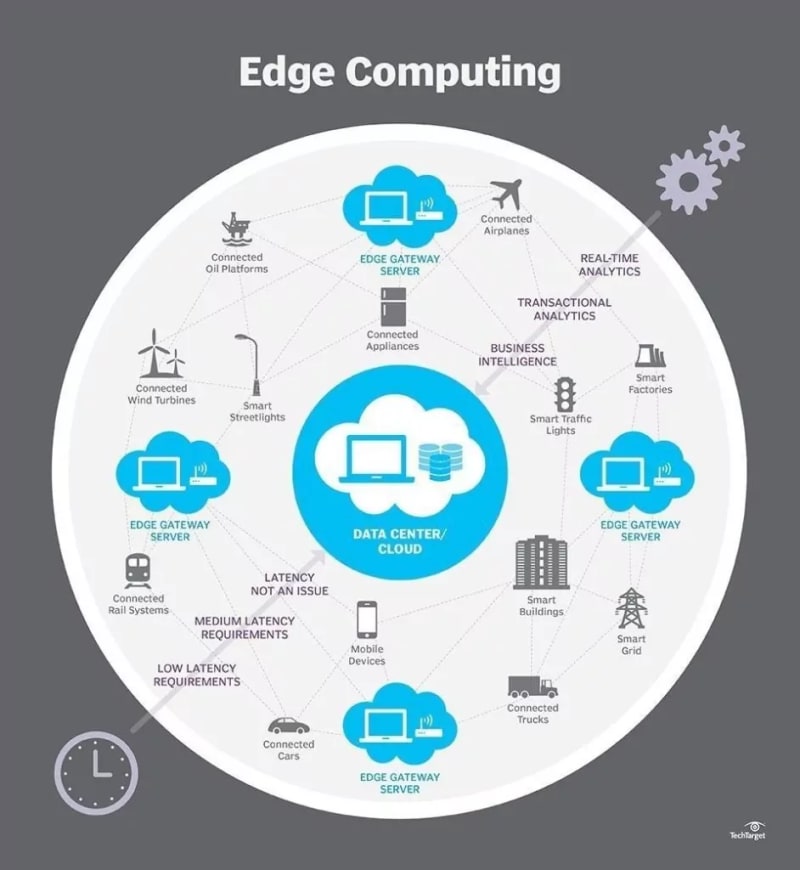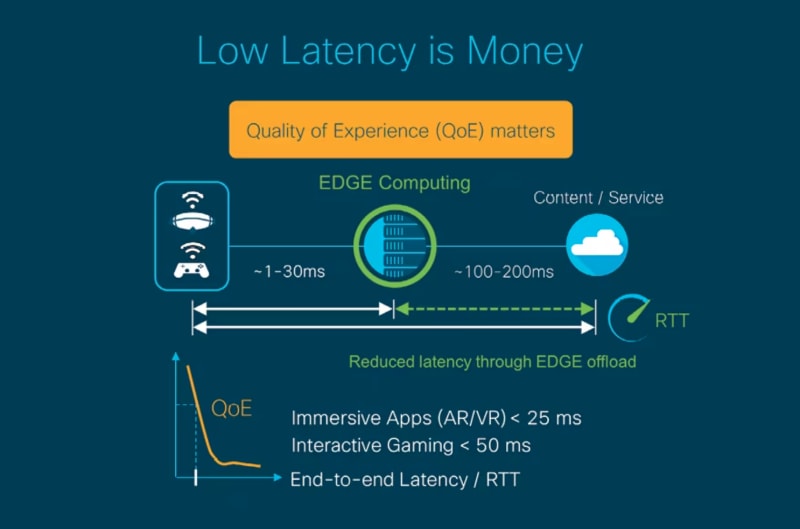There are many reasons to adopt IoT edge computing for your business. The success depends on two main variables: how well you plan your IoT edge computing architecture and strategy? And what tools you choose to incorporate into your IoT edge computing stack.
The Internet of Things is everywhere. Industries like manufacturing, retail, healthcare, agriculture, and critical infrastructure are investing heavily in IoT technologies to automate operations -- and there's no wonder why: the use cases for IoT are endless. From predictive maintenance to remote monitoring and fleet management -- you name it, IoT can optimize it.
But with new opportunities come new considerations. 45% of technology decision-makers say cloud, infrastructure, and operations are their main IoT priority for 2023. Integrating and managing IoT technologies is challenging, especially if you consider the growing demands of clients in competitive industries, where a 30ms delay can cost millions of dollars or even lives.
Most of the challenges with IoT are common to all types of organizations -- performance, cost, scalability, and information security. To address these issues, cloud computing technologies have extended to the edge, bringing computation and storage closer to the source with IoT edge computing.
In this article, we'll define what IoT edge computing is (and what it isn't), what an IoT edge computing architecture looks like, and present you with seven detailed justifications for taking your IoT to the edge.
Living on Edge: What is IoT Edge Computing?
IoT edge computing is a platform architecture practice that combines edge computing with IoT technologies to deliver cloud computing services as close as possible to the IoT devices that generate and transmit raw data.
As an approach, IoT edge computing strives to resolve the "last mile" issue of IoT communications in a way that enables IoT applications that handle sensitive, real-time, or critical decision-making data that demand low latency and high availability. These include industries like gaming, physical security, financial services, sharp production lines, connected virtual reality applications, and autonomous vehicles.
IoT vs. Edge vs. Cloud
Before we delve into IoT edge computing architectures, we must understand the technologies and components involved and how they interact.
In this context, IoT refers to the sensors and machines that produce raw data but do none of its processing and store very little of it for a short time. For example, smart bulbs and heat sensors are very limited in processing capabilities.
Edge computing is the layer between the centralized cloud-based data center and the IoT devices. It may include IoT edge gateways if not built into the deployed IoT devices. More IoT solutions today are "smart" devices capable of storing and processing data locally and running customized applications. IoT and edge are sometimes used interchangeably when referring to connected devices that are not PCs or smartphones.
Cloud computing and edge computing are closely related as they draw from the concept of distributed computing and make data rapidly accessible to users and applications. While cloud computing provides robust computational capabilities, vast storage capacity, and accompanying services and integrations, edge computing focuses on minimizing the physical and virtual distances between data centers and edge devices, leading to lower latency and higher speeds.
IoT Edge Computing Architectures
There's no one-size-fits-all in IoT edge computing implementation, and there are many considerations to account for, including cloud security, budgets, and geographical expansion of services.
Three types of IoT edge computing architectures are employed by organizations today:
On-premise computing -- Pure Edge
The purest form of edge computing entails deploying all compute resources on-premise and near the edge. This costly approach may be suitable for organizations that operate under strict compliance requirements that prevent them from sending any data to the cloud for security reasons.
Alternatively, businesses operating IoT deployments in remote locations with costly connectivity, limited bandwidth, and high latency may have little choice but to opt for pure edge computing, limiting data transmission to the cloud to the output of the data processed locally.
For example, remote mining operations employing IoT sensors and remote-controlled machinery may leave the mission-critical sensor data and device control applications in the local network. They can upload relevant business data and statistics to the cloud for processing and long-term storage without impacting on-site operations.
Hybrid edge computing -- Thick Edge & Cloud
This hybrid architecture can fit organizations with on-prem data center capabilities and want to combine them with cloud-based resources and services. It allows you to leverage existing on-prem resources to complement the capabilities you get from the cloud.
With Control Plane, you can even have your workloads move seamlessly between cloud vendors and your on-prem data centers in a way that reduces cloud costs while optimizing for reduced latency and improved performance. All without having to change your application architecture, invest in additional resources or acquire new skills.
On-cloud computing -- Thin (or Micro) Edge & Cloud
Delivering IoT applications with barebones edge computing (or none) is the fastest and most flexible approach with the lowest setup costs. However, this approach demands that you carefully select and set up the cloud-native IoT operating environment to ensure it doesn't impair your user experience in terms of latency and cost you an arm and a leg as you scale.
If you start with a super-thin edge, Control Plane can help you control expenses while ensuring geo-optimized, low-latency multi-cloud management for your applications and users. In addition, Control Plane strips away the complexity of employing the technologies that enable the synergy between edge and cloud computing technologies (like Kubernetes) with developer-friendly API and UI.
Edge Computing in IoT: 7 Reasons to Take IoT to the Edge
1. Lower latency & increased performance
The network distance between the compute node and the client can critically impact hyper-responsive or real-time IoT applications. With most IoT devices and applications in enterprise settings demanding low latency to provide value, edge computing is almost unavoidable if you want to provide low-latency services. The end-to-end trip the data takes from IoT devices to the cloud and back can be as high as 250 ms or more, depending on your cloud vendor and edge device location. With edge computing, it can be as low as 10 ms.
2. Less bandwidth consumed
Even if your local connectivity provider doesn't charge you per GB transmitted, the sheer volume of data produced by IoT devices as operations scale can overwhelm site connectivity and impair other business processes requiring network resources. Pre-processing, analyzing, and compressing the raw data from IoT devices can significantly lower network congestion, ensuring that low-latency network applications are unaffected.
3. Reduced cost of ownership
There are obvious benefits to the cloud, endless possibilities for scalable computing, potentially infinite storage, and shorter time-to-market with minimal to no initial investment. However, cloud costs can quickly get out of hand, especially as cloud deployments grow and expand and the volume of data increases exponentially. You may also need to dedicate more bandwidth to IoT to ensure it doesn't impact other critical business operations.
With edge computing, cloud-native IoT applications are a lot more cloud-cost-effective, especially in the long run, helping businesses reduce data operations costs as they scale and expand.
4. Increased data privacy & security
The IoT and the masses of data it generates have proven to be a security and data protection challenge for CIOs and CSOs across enterprises, with or without cloud computing infrastructure. With a security-driven architecture, sensitive data is safer as edge devices allow for more robust authentication and encryption. In addition, storing data away from the centralized data centers in your public or private cloud reduces the potential business-wide impact of a successful breach of one edge device.
5. Higher availability & edge load balancing
What happens to your IoT system if suddenly removed from the cloud? What processes do you trigger when the designated edge computing devices fail? With IoT edge computing, you can design an architecture that dramatically improves reliability and availability, as the closest healthy edge device can take over if one edge device fails.
Control Plane enables multi-region with maximum workload survivability, so any outage is mitigated by the URL being served from the nearest healthy workload. Because Control Plane supports multi-cloud, your system's performance won't be affected even if there is a full cloud failure.
Plus, IoT data doesn't have to be sent to the cloud center and back for processing: multiple edge devices and gateways can process your data closer to the source -- and they can be smart about it, too: choosing the most suitable gateway depending on proximity and availability, so your performance isn't impacted.
6. Eased scalability & flexibility
When you think of edge computing, scalability and flexibility are probably not the first advantages that pop into your head. However, with flexibility built into your IoT edge computing architecture, and tools like Control Plane's developer-first cloud-native toolset, you can mix and match any type of compute -- on-prem, hybrid, and multi-cloud with just a single line of code.
Adding AI and consumption-based resource allocation to your IoT edge computing setup enables you to balance performance and cost as demand for specific cloud functions and applications rises and drops.
7. Ease of management & patching
Management and patching overhead have a cost of their own and are particularly annoying. When deploying updates, patches, or new applications to your IoT system, IoT edge computing makes the task more accessible and efficient. You can deploy the updates gradually to different locations and edge devices but also do so from a centralized control panel.
Seamless multi-region and cross-cloud IoT Edge Computing with Control Plane
There are many reasons to adopt IoT edge computing for your business. Still, success in IoT edge computing depends on two main variables: how well you plan your IoT edge computing architecture and strategy to balance performance and cost while adjusting to changing customer needs and what tools you choose to incorporate into your IoT edge computing stack.
Control Plane offers IoT application developers a unique opportunity to effectively and effortlessly deploy their applications anywhere they want them to run. Schedule a demo today and discover how to make the cloud work for you -- anywhere.








Top comments (0)